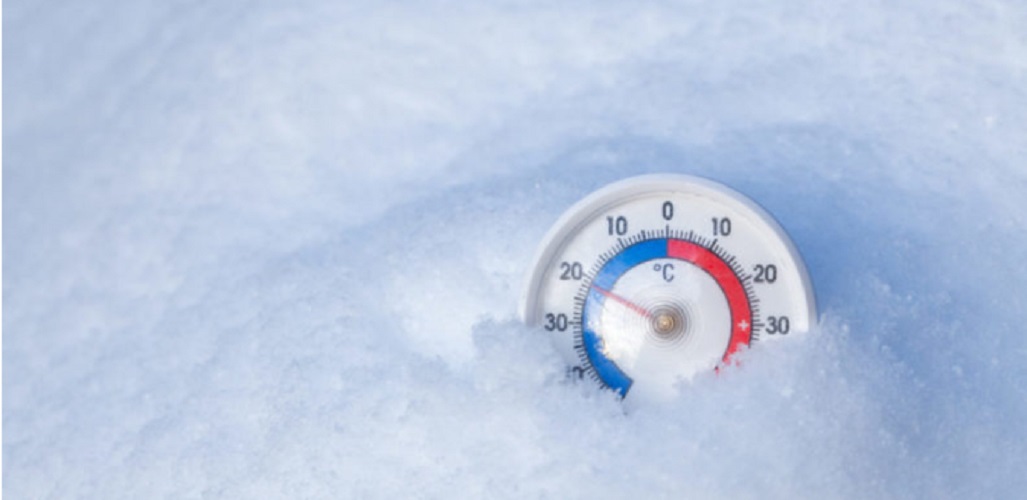What is the temperature?
We explain what the temperature is, the scales to measure this magnitude and how it is measured. The types that exist and differences with heat.
-
What is the temperature?
Temperature is a physical quantity that determines or reflects the amount of heat of an object, the environment or a body . It is the measurement of the amount of heat (or energy ) generated by the movements of the particles of a gaseous, liquid or solid mass.
Temperature measurement is related to the notion of cold (lower temperature) and heat (higher temperature), which can be perceived instinctively. In addition, temperature acts as a reference value to determine the normal heat of the human body , to estimate health states , for chemical and industrial or metallurgical processes.
-
Temperature scales

There are different types of scales for temperature measurement and the most common are:
- The Celsius scale . Also known as “centigrade scale”, it is the most commonly used along with the Fahrenheit scale. It is the extent to which the freezing point of water equals 0 ° C (zero degrees Celsius) and its boiling point occurs at 100 ° C.
- The Fahrenheit scaleIt is the measure used in most English-speaking countries, where the freezing point of water occurs at 32 ° F (thirty-two degrees Fahrenheit) and the boiling point, at 212 ° F.
- The Kelvin scale. It is the measure used in scientific experiments and establishes the “absolute zero” as zero point, which assumes that the object does not give off any heat and is equivalent to -273.15 ° C (degrees Celsius).
- The Rankine scaleIt is the measure commonly used in the United States for thermodynamic temperature measurement and is defined when measuring Fahrenheit degrees above absolute zero, so it lacks negative or below zero values.
-
How is the temperature measured?
The temperature is measured by thermometric quantities, that is, different units that represent the temperature. For this, a device called “thermometer” is used, of which there are several types depending on the phenomenon that needs to be measured, for example:
- Dilation and contraction. There are thermometers to measure gases (constant pressure gas thermometer), liquids ( mercury thermometer ) and solids (liquid or bimetallic column thermometer) that are elements that expand with hot temperatures or shrink with cold temperatures.
- Variation of electrical resistance. The electrical resistors, that is, the electron flows that move through a conductive material, vary according to the temperature they acquire. For its measurement, electrical resistance thermometers are used as sensors (based on a resistance capable of transforming the electrical variation into a temperature variation) and the thermoelectric ones (which generate motive force).
- Thermal radiation thermometer The radiation phenomena emitted in the industrial sector can be measured by means of temperature sensors such as infrared pyrometers (to measure very low cooling temperatures) and optical pyrometers (to measure high temperatures of furnaces and fusion metals).
- Thermoelectric potential The union of two different metals that are subjected to different temperatures from each other, generates an electromotive force that is converted into electrical potential and measured in volts.
-
Temperature types

There are different types of temperature and, therefore, they are measured with different tools, such as:
- Room temperature It is the scale of temperature measurement that can be recorded in the spaces in which the human being develops and, for its measurement, an environmental thermometer is used that uses Celsius or Fahrenheit values.
- Body temperature It is the measurement of body temperature. It is considered that 36 ° C is a normal value for humans and, if the temperature exceeds 37 ° C (or 98 ° F), the individual is considered to have a fever.
Other types of temperature measurement allow you to calculate the thermal sensation, for example:
- Dry temperature. It is the measurement of air in an environment, regardless of the heat radiation of the environment and humidity. It is measured with a bright white painted bulb thermometer so as not to absorb radiation.
- The radiant temperature It is the measurement of the heat emitted by the radiation of the elements of the closed environment and is taken through a bulb thermometer.
- Wet temperature. It is the temperature measured by a thermometer located in the shade, with its bulb wrapped with wet cotton and located under a stream of air . Through this system, the water evaporates and the heat is absorbed, which generates a decrease in the temperature that the thermometer captures with respect to the ambient temperature. This results in the measurement of thermal sensation.
-
Difference between heat and temperature

Although heat and temperature are very related concepts, they are not the same, and it differs by:
- Its meaning. Heat is the total energy of the movement of molecules found in matter. Temperature is a magnitude of heat, that is, a measure of that energy or heat.
- His symbol Heat is represented by the “Q” and the temperature by the letter “T”.
- Its effect. Heat is a physical effect that increases the temperature. Temperature is the measurement of heat in bodies.
- Your transmission Heat is transmitted from one substance to another and can be spread by conduction, convection or radiation. Depending on the type of heat propagation, it will be the temperature level reached.
- Your object for measurement. Heat is measured with a calorimeter and temperature is measured with a thermometer.
- Your unit of measure. Heat is measured in Joules, calories and kilocalories. The temperature is measured in degrees Kelvin (k), Celsius (C) or Fahrenheit (F).
-
Temperature examples
Some examples of temperatures are:
- The engine temperature of a car that is running is 85 ° C.
- The ambient temperature, which is considered comfortable, is between 20 ° to 25 ° C.
- The oven temperature on to prepare a pizza is 180 ° C.
- The boiling water temperature is 100 ° C.
- The average body temperature is 36.5 ° C.
- The temperature to reach the solidification of the water to the point of becoming ice is less than 0 ° C.
- The temperature that is controlled by a “voltage regulator” located inside an electrical appliance, prevents overheating or damage to the equipment.




